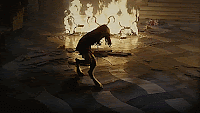I know I said I was going to try to do two posts this week but Tuesday was second shot day which ate up a bit of time but I’m now fully vaccinated! With no real side effects. So go get your second shot so we can all hang out together and things can get back to normal. Well, normal but with some major social reforms that this pandemic has really highlighted as necessary changes.
Anyway…
Look! More questions, more answers! And this takes so much pressure off me, because I don’t have to think of topics…
So, last week, after I prattled on about prologues, JD asked…
“I’m wondering if you have any suggestions on how to judge my pacing? I know every story is different, but in general, are there any tricks or tools to better know when I’m “running out of time” to get back to action before I lose the interest of my (hypothetical future) readers? Not just during the world build, but throughout?”
This takes even more pressure off because this question already contains part of the answer. Not all of it, but, y’know… maybe 20-25%.
When we talk about pacing, the first important thing, as JD said, is to recognize that every author (and every story) is going to approach things differently. Some need to dive right in with the fist fights and explosions. Others may take the slow burn, ramping tension approach. Right off, we need to recognize that pacing isn’t something that’s going to hit a bunch of universal guidelines. I think I’ve mentioned once or thrice before (here and at the Writers Coffeehouse) that I’m verrrrrrrry leery whenever folks set down rules like “introduce your love interest on page 16, inciting incident on page 23, your first conflict by page 42.” Following blanket rules like this either creates cookie-cutter, formula stories… or it just turns good stories into bad stories. Because they’re being forced to hit benchmarks that don’t apply to them.
I mean, my new book doesn’t even have a love interest. So does that mean everything else bumps up by one page, or…?
The second important thing is to always remember Lee Pace is the best pace. I mean, seriously, look at the range this guy has. Pushing Daisies to Guardians of the Galaxy? I don’t know about you, but I freaked out when I realized that was the same guy.
But, seriously, let’s look at a few rules of thumb. Things we could probably consider as loose guidelines if nothing else. Because again, every book’s going to be different.
I think the best thing to remember is that pacing is a structure issue. Specifically, dramatic structure. I’ve talked about dramatic structure a few times before, so I won’t bore you with it again now. The important thing to remember for this discussion is that it’s always a slope. Sometimes that slope goes up, sometimes it goes down. But what it should never do is amble along on a flat line. Because a flat line means… well, you know. Dead.
Any chapter (or broad swath of my book, if I’m being clever and not doing chapters) should have a clear up or down on that slope. It doesn’t have to be a huge slope, but if I’m starting and ending at the same level of character growth, of overall tension, it probably means I’m doing something wrong. A chapter (I’m just going to keep using chapter as our nice, simple, unit-of-book-construction) should lean things one way or another, whether it’s holy crap you found the lost sword Dyrnwyn or just no, Jules, I’m not just going to give you some of my Doritos. Things need to move higher or slip downwards.
Probably worth mentioning… sometimes in our stories we plant things that don’t pay off until later. Character details. Worldbuilding. Set-ups for twists or other cool reveals. Such things are fantastic, of course, but they still need to work within my overall dramatic structure. It can’t be a situation where a chapter will be interesting in retrospect—it has to be interesting now, on the reader’s first time through.
Granted, this doesn’t mean it has to be interesting for the same reasons. It’s a wonderful skill to be able to pull that sort of sleight of hand, to make my readers look at this and be totally enjoying it, only to later realize that was the thing they should’ve been watching. But it still needs to be a chapter that moves things one way or another on that slope.
Because, again… the worst thing my chapter can do is flatline.
The sort of parallel to this—should be obvious but I’ll say it anyway—is that something needs to happen in every chapter (just to be clear, still using chapter as our basic, large-scale building block). In the same way we want to start with someone’s life changing, on some level or another, we want to keep having things happen. That’s what a good story is—the plot driving someone’s arc and their arc, in turn, is driving the plot. And driving implies we’re going somewhere, not sitting in a parking lot with the engine running.
Again, this doesn’t need to be huge movement. Every chapter doesn’t need huge leaps forward from the plot or broad swaths of character development that completely changes how we look at someone (that’ll usually ring a bit false anyway). Because every story is different and they’re going to move at a different pace depending on where we are in said story.
But they should always be moving. At some speed. In some direction.
How about this. Remember back in the A2Q when I made up a rough outline for a werewolf novel? Let’s take a look at those first few chapters I planned out and how they’re paced.
–Start with Phoebe and Luna at home. Both getting ready to go out for the evening, but Luna’s heading out to another party and Phoebe’s going hunting. So they’re looking for things, asking who borrowed what, warning each other to be safe, and so on.
(You can see a more fleshed out version of this here)
This is a slow opening, yeah, but there’s stuff happening. Both characters are doing things, I’m establishing relationships, doing some worldbuilding, which will should build some interest. And things are actually progressing. Both of them are getting closer to their goal of being ready to head out for the night.
–Phoebe’s out hunting and encounters the super-werewolf (although she doesn’t know it’s super yet). She puts a silver crossbow bolt in it and it’s going to ignore it and run off. This will also give her a chance to grumble about losing a silver bolt because they’re expensive. She can track it for a while, find the bolt… but no body.
Now we’re moving at a faster pace. A lot more action, and it’s action moving the story forward as it introduces a bit of an unexpected mystery and what looks to be a greater challenge. The first part got my reader intrigued, so now hopefully this gets them a bit more hooked with a sample of what’s to come.
–The next morning Phoebe goes to the lodge and we meet Luc and talk about hunting last night, if he saw anything noteworthy. Maybe some one-sided flirting?
Intro. Andrea, the Warden of the lodge. She’s willing to entertain the ‘super-werewolf” idea, and will pay an extra $2500 bounty for proof.
Things slow down here, but logically so—it’s daylight, the hunt’s over. Also, structure-wise, we can’t keep things ramped up to nine for the entire book or it’ll make getting to ten seem a lot less interesting. And when everything hits ten on the tension-ometer, I want it to mean something.
Plus, there’s some more worldbuilding, a possible love interest/rival/both, and a new goal for my heroine. It’s a lot of talking, but there’s some physical action taking place and it’s all nudging things along in the plot. Creeping forward, inching the tension up a bit with this new goal (and the implied possibility of not achieving it).
See where I’m going here? The pacing speeds up and slows down, but the big thing is that there’s always a pace. The story’s always moving. I mentioned something a while back that’s very true here–stories are like sharks. If they stop moving they’ll die.
(the shark thing’s not entirely true? Depends on the type of shark? Huh. Learn something every day…)
Again, every story is going to be different, so please don’t look at this as me saying “go slow, then fast, then slow again.” Your story is your story. It’s going to have its own pacing requirements that need to line up with what you want your story to do.
But hopefully this has given you a few things to look for.
Next time, I might finally get to clowns. Or maybe I’ll talk about plotting. That was a question I got a while back that’s still owed an answer. And questions get answers.
Until then, go write.















